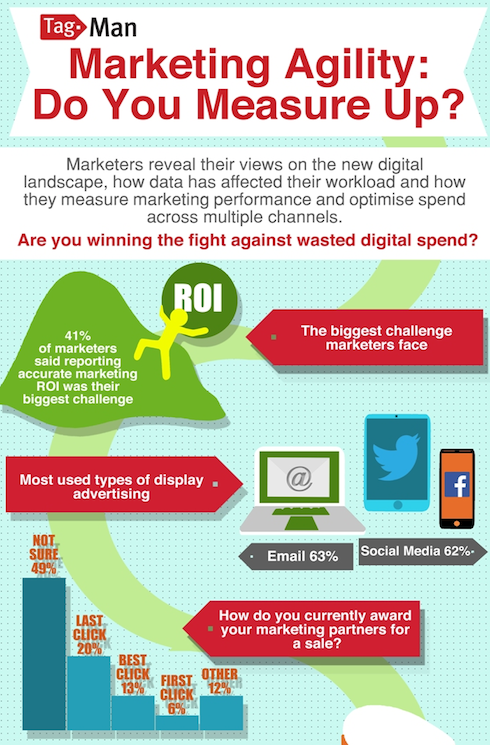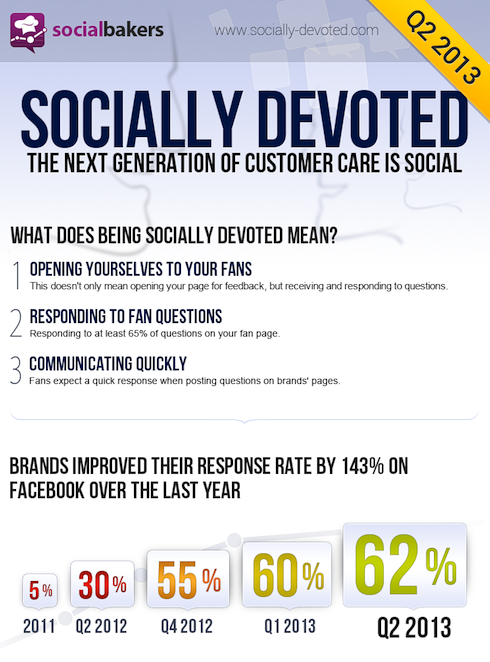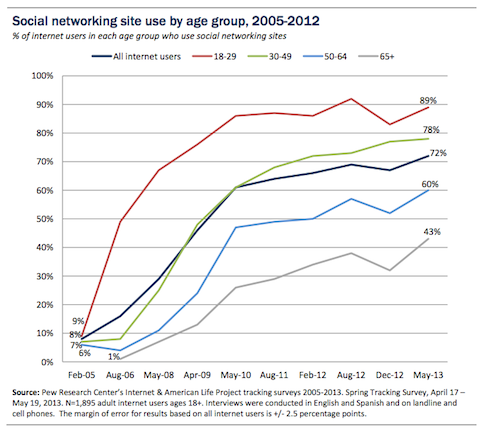By Nick Johnson - August 6th, 2013
New insights into social media demographics. FedEx does it again, and how social media channels must work together.
How do marketing channels work together?
It’s a question that many corporations are asking themselves, but according to new research from TagMan, over a third of marketers don’t understand how their business’ marketing channels work together.
What’s more, nearly half of those surveyed across the FMCG, travel and retail sectors stated they also had little insight into the value of their social media activity or that the investments they were making would deliver any commercial gains.
“The aim of the study was to drill down into what brand marketers really think about how their jobs have changed, and it has uncovered some incredibly surprising results,” commented Jon Baron, CEO of TagMan. “Being able to understand what ROI your marketing spend is generating should be at the heart of a digital marketer’s focus, giving them the ability to interpret, value and respond to the data available to them.
Baron also added: “One of the more unexpected results that the survey returned was that digital marketers still considered e-mail as the most useful form of digital advertising. Insights generated from a tag management system’s holistic view may provide digital marketers with a greater perspective and highlight other more lucrative channels.”
With marketing now having a social component, it’s vital that all businesses understand how these channels fit into their marketing mix. Tangible gains can be made, but this can take some time and also mean long-term investment.

Good social customer services reduces costs
Corporations know that they have to lift their game when it comes to customer services, which is increasingly moving onto their social media networks. New research from Social Bakers that looked at brand attitudes to social media and their customer care activities has shown that over three quarters believe that improvements in this area of their businesses has delivered a return on their investment.
Indeed, over 80% of the companies quizzed use multiple social media channels to deliver their customer services, with 71% starting that they have seen their costs reduce as a consequence of this activity.
Also, according to research carried out by NewVoiceMedia £12 billion is lost by business with poor customer services. NewVoiceMedia’s CEO Jonathan Gale said: “Customers have a stronger influence on a business’s success than ever before and it’s surprising how many organisations still aren’t getting it right. Customer experience is a key differentiator. By doing it well, organisations can drive the customer acquisition, retention and efficiency that make leading companies successful.”
What is clear is that customer service has gone social – there is no avoiding this move if your corporation and its brand are to maintain the positive sentiment it has been generating. What’s more, high levels of customer service over social media networks is without doubt a cost saver. Businesses are realising that the investments they make in this area of their operations sees reductions in costs elsewhere.

Fedex apologies again!
You may remember that FedEx landed themselves in hot water a couple of years ago when a widely tweeted video showed one of their couriers throwing a package over a wall. Another video this time of a FedEx employee throwing packages into the back of their van has prompted yet another apology from the company’s VP of human resources.
The footage of course gained over a million and a half views, but what is interesting is that a similar number watched the apology video. Social media watchers have also pointed out that this time the public seems more supportive of the brand for making the apology. This shift in sentiment is clearly a reaction to how the business has managed its brand advocacy since the last incident, and shows that consumers are willing to give brands a chance if they admit their faults.
This doesn’t mean of course that simply making a video to apologies when things have gone wrong is all a brand needs to do – high levels of customer service should always be maintained – but it does indicate that social media customer services has evolved.
However, FedEx need to be careful, as it can be very easy for this kind of exposure to become a regular occurrence with these FedEx videos becoming too familiar with corresponding damage to the overall brand value. Consumers will forgive some lapses, but must also see that a brand has learned from its mistakes.
The social media customer base continues to grow
New research from Pew has revealed that over 70% of online adults now use social media networks. The Pew report states: “As of May 2013, almost three quarters (72%) of online U.S. adults use social networking sites, up from 67% in late 2012. When we first started asking about social networking sites in February 2005, just 8% of online adults said they used social networking sites.”
The demographic changes that have taken place since the last survey are interesting if your business is looking for metrics to guide which social media groups should be cultivated for your business’ goods or services. The over 65-age group for instance has more than tripled. Twitter sees the most growth with the number of users doubling since November 2010, with the highly sought after 18-29 age group revealed to be the most likely to users of this platform – 30% of them do at the moment.
Pew’s research indicates that social media continues to be a force that no brand can ignore. The social media channels themselves and the consumers that use them have been evolving. It is critical to understand these changes and also evolve your corporation’s response to the shifting sands that is social media marketing today.

Until next time….
The Useful Social Media team.
Next Reads
October 2013, New York
How you can leverage social media for a more effective customer service function and better customer insight
Brochure Programme